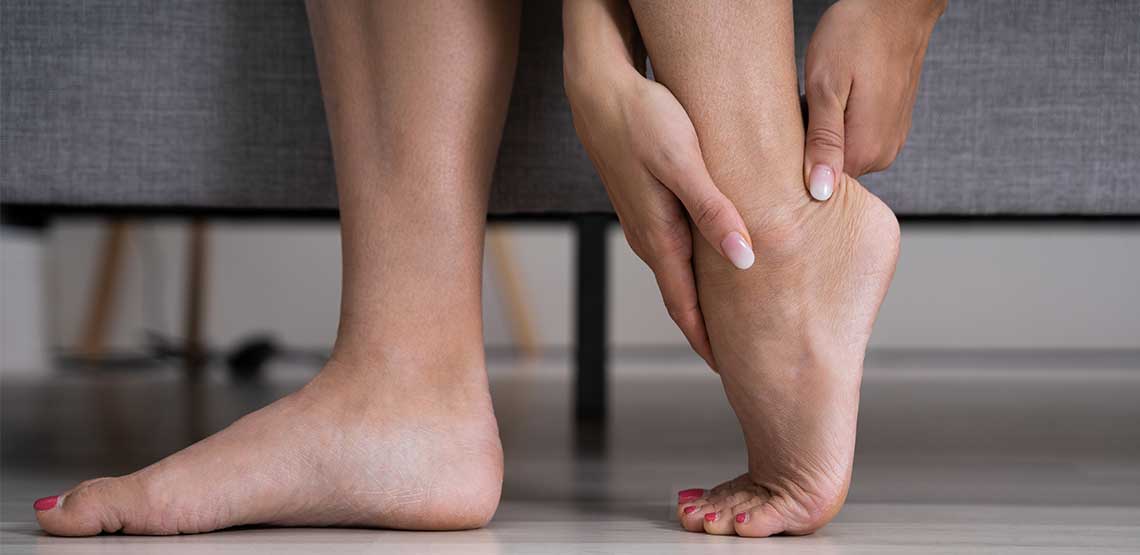Understanding How to Treat Tendinitis
There is a dull ache in one of your joints, especially when moving it. Or maybe there is some tenderness in a certain joint, and perhaps some mild swelling. What you could be experiencing is tendinitis. Tendinitis is an inflammation or irritation of a tendon. A tendon is a thick cord that attaches bone to muscle.
What Causes Tendinitis
Tendinitis can happen when a particular body motion is repeated too often or because the level of a certain activity, such as weightlifting, is increased too quickly. Some common areas where tendinitis occurs on the body include the shoulder, elbow, knee, wrist or Achilles tendon (the large rope-like tendon attached to the heel bone at the back of the foot).
Symptoms of Tendinitis
There are many symptoms that can indicate the presence of tendinitis. It is usually associated with pain in the tissues around a joint. Often, if a joint is used repeatedly for work or other activities like sports or even leisure, the condition can occur. Tendinitis can also be present if a certain joint feels weak or the area around the joint is red, swollen or warm to the touch.
There can also be specific locations around a joint that may indicate tendinitis symptoms. For instance, if tendinitis is present in the shoulder, there could be a dull, aching pain in that area that is more general in nature. The pain could also be felt in the upper arm near the chest. Such pain can be worse at night or even disrupt one’s sleep.
The term tennis elbow is used to describe tendinitis that occurs in the outer side of the elbow. Sometimes that pain can even extend down to the forearm and wrist. Golfer’s elbow is similar in nature and is defined by a pain that is felt on the inner side of the elbow. Jumper’s knee is a form of tendinitis that is usually felt as pain below the kneecap, though sometimes it can be felt above the kneecap. De Quervian’s disease is a form of tendinitis that involves pain at the back of the wrist and near the base of the thumb. Achilles tendinitis can come with pain at the back of the heel or two to four inches above the heel.
Related Search Topics (Ads)
How Tendinitis Is Diagnosed
A medical professional can usually diagnose tendinitis during a physical examination. They may take things a step further and order X-rays or other imaging tests to be done if they want to rule out other conditions that may be causing the signs and symptoms.
How to Treat Tendinitis and Manage Symptoms
There are some common methods for how to treat tendinitis a medical professional may prescribe. A medical professional may recommend what is known as the RICE treatment for pain relief. RICE stands for resting the affected joint, applying ice packs to it, compressing the affected area with an elastic bandage to reduce soreness and inflammation, and keeping the joint elevated. A medical professional may also recommend taking over-the-counter pain relievers like aspirin or ibuprofen, which may also help sore soft tissue.
A medical provider may also let a patient with tendinitis know if and when it is advised to begin doing physical therapy exercises to strengthen the muscles around the affected joint. This exercise could be advised to begin within a day or two of when treatment begins. They may advise if exercise is suggested that the patient begin doing so after a long warm-up period to reduce shock to the affected tissues. Treatment may also include lifting weights or using an elastic resistance exercise band. Medical professionals may recommend that you start exercise easy at first and then build to more rigorous exercise over time. They may also advise patients to stretch as part of a treatment plan.
Preventing Tendinitis
There are several ways to prevent tendinitis from forming. Some tips include first and foremost, stopping any physical activity when pain is felt. Before engaging in any physical activity, it is important to learn the proper body position for that activity; seeking advice from a professional on how to properly play a certain sport or other physical activity may help prevent tendinitis. In general, a person should avoid staying in the same position for long periods of time. It is advised to take breaks every 30 minutes when engaging in physical activity. Avoiding sitting with your leg folded under you can also be a form of prevention.
For picking up objects, the body should be positioned directly in front of the object. Arms and hands should be stretched directly forward. Never grab objects with arms in a sideways position. If the object is above the head, make sure the body is centered and when reaching for the object, do so with both hands. When picking up objects, also do so with a firm grip, but not too tight a squeeze. Use both hands to carry heavy objects and be sure to carry objects in front of the body and not off to the side.
Before starting to play a sport, a person should be sure to stretch according to what the sport requires, wear the proper clothing for the sport and in the appropriate size, and start playing the sport slowly, gradually increasing the level of activity.
By listening to the body, its needs and limits, you can go a long way to prevent conditions like tendinitis and other injuries. And if pain arises from any kind of physical activity, stop the activity and seek medical attention to hopefully prevent further damage. Your doctor can help you determine how to treat tendinitis best and develop a plan for healing.


